Review of two cradles for HTC Desire S manufactured by Mugen Power
This is a detailed review of two cradles for the HTC Desire S smartphone from Mugen Power. The first part of the review is dedicated to the desktop cradle KDG-LXH-HTDS . The second part of the review is to the KDG-CS1-HTDS car cradle .
The review includes not only an external inspection of the devices listing their characteristics, but also a complete disassembly of the devices.
So, after prolonged use of the extended battery for my smartphone (a review of which I wrote earlier), making sure that the battery is quite high quality, I had a desire to acquire cradles manufactured by this company from the Middle Kingdom.
On the manufacturer’s website, I saw two models, one desktop, the other, respectively, - automobile. I was interested in both models.
Having contacted an already familiar to me, battery representative Russian-speaking company, I agreed to receive these devices.
A couple of weeks later, a parcel was waiting for me at the post office.
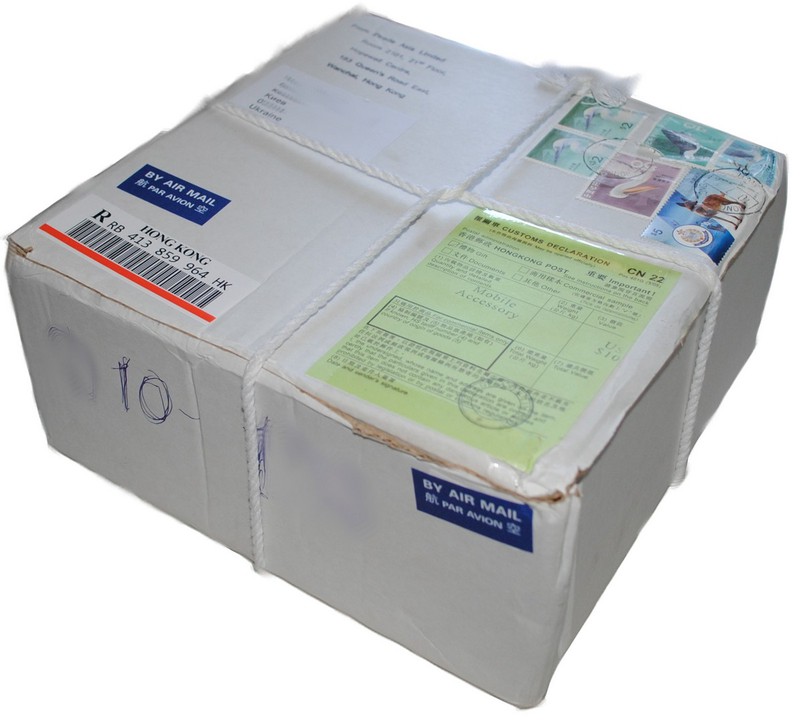
Packing cradles.
It was packed quite high quality.
Opening the box, I saw tightly packed cradles. Everything is neat, in its little bags, and the car cradle is in a separate box.
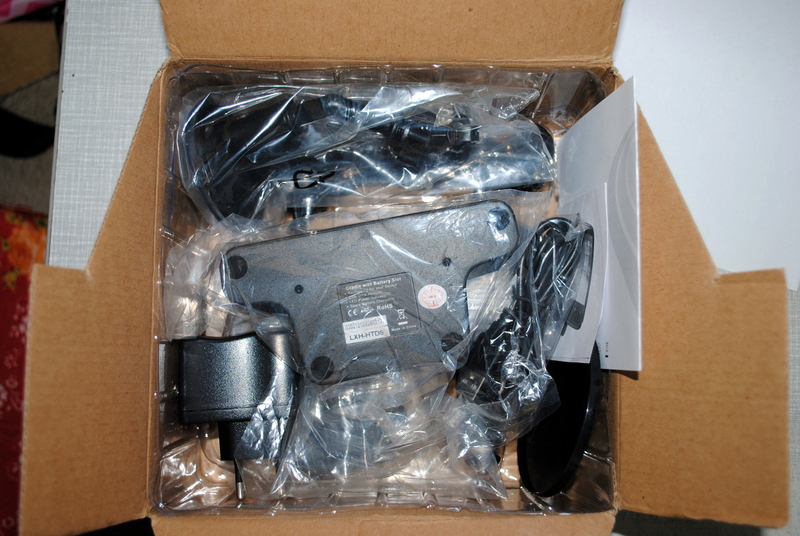
The contents of the box.
The desktop cradle was the first to be tested.
Here's what they write about this cradle on the site:
The angle of your Pocket PC allows you to easily see the screen and have quick and convenient access to the menu, which will allow you to use the device with maximum impact.
Features:
- Compatible with USB and USB2 ports
- Possibility of simultaneous synchronization and charging
- Current protection
- Equipped with LED indicator (LED)
- Port for charging an additional battery
- Compatible with PC and Mac (Mac)
- An ideal accessory for mobile professionals
Included:
- Cradle
- 1 AC charger
- 1 USB cable
And looking ahead, I’ll say that this is true but, first things first.

Contents of delivery.
In the kit was all of the above. The cradle is quite weighty, despite its size, however, you still have to pull out the smartphone, holding the cradle with your hand.

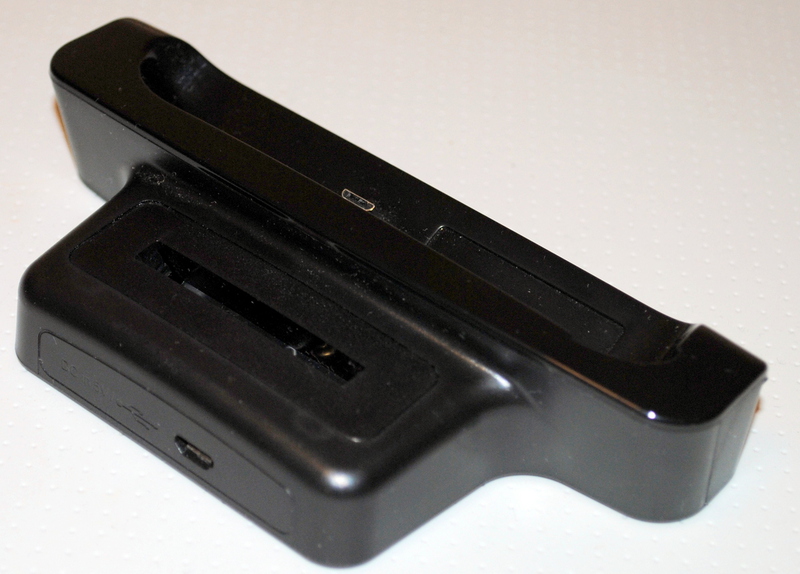
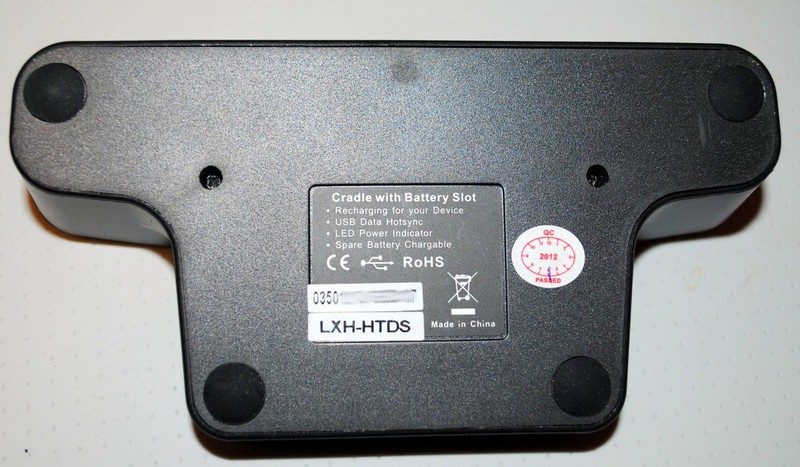
Cradle front, back and bottom.
Assembled neatly, nothing loopholes anywhere. Partially glossy plastic, partially matte. The materials are high quality and pleasant to the touch.
Rubber feet prevent slipping on a smooth surface.
The power supply is standard, with a USB-A connector. It has a red LED that lights when the power supply is plugged into a power outlet. It gives out 5V and 1A, as well as the HTC native charge, but the native charge is designed to charge only a smartphone, and then extra can be charged at the same time. battery, so it seems to me that it would make sense to make the PSU more powerful. Although the scenario of simultaneous charging of both a smartphone and a battery is not frequent.
The USB-micro USB cable is ordinary, in length - as short as the native HTC.
There are two LEDs on the cradle. Blue - glows when power is supplied to the cradle. The second is two-tone. Glows red when charging extra. battery. Green - if add. The battery is charged or when it is not inserted in the charging slot. Both the smartphone and the battery are inserted into the cradle perfectly and easily.
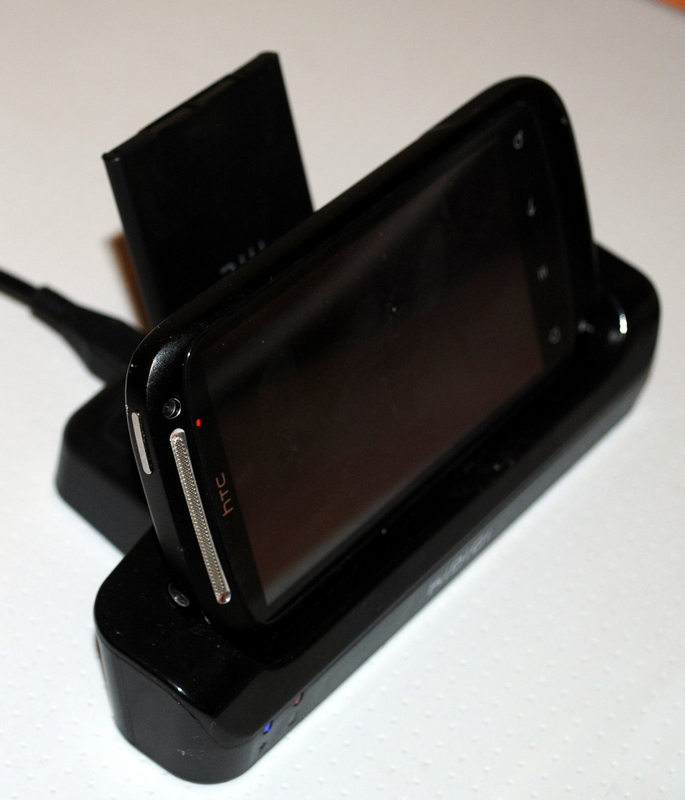

Smartphone and battery in cradle.
When installing a smartphone in a cradle, it does not automatically go into dock mode. I don’t know what this is connected with - the firmware of the smartphone or the cradle device. On the open spaces of the network, I found that this is solved by closing the MicroUSB pin 4 with a minus, but I did not conduct such experiments. In principle, for me, the lack of an automatic transition to the dock mode is even better, since a constantly burning screen is not a good idea. And if anyone needs it, it can display the dock mode icon on the desktop.
Charging took place in normal mode without any nuances. Synchronization with a computer is also.
Now you can see the inside of the device.
Let's start with BP.
It can be disassembled easily by unscrewing just one screw. No latches.
Made soundly. There is a “BL 817C 135" chip. I did not find a specification for it on the internet.
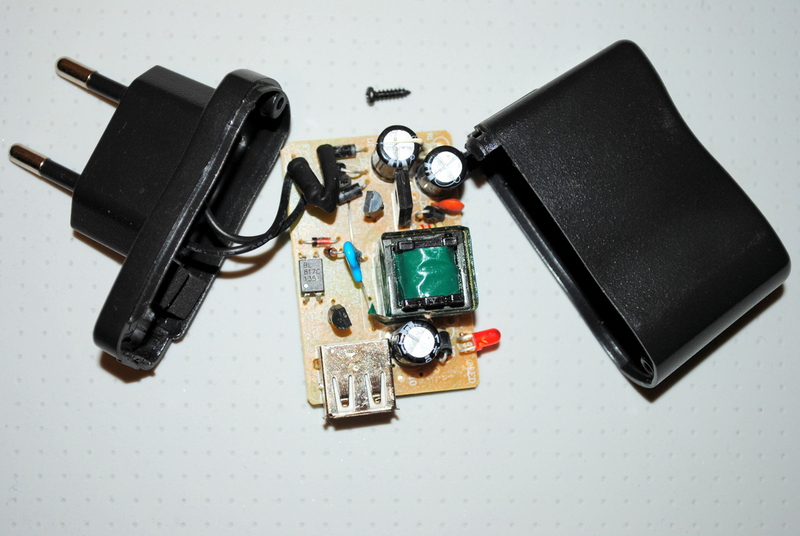
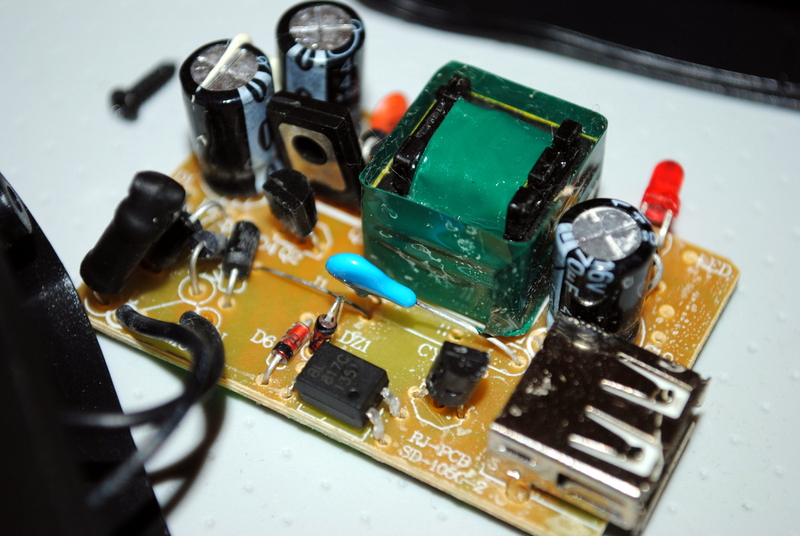
Inside BP.
Now let's get to the cradle itself.
To disassemble it, you need to unscrew 6 screws on the bottom. Two in the middle and four under the rubber feet.
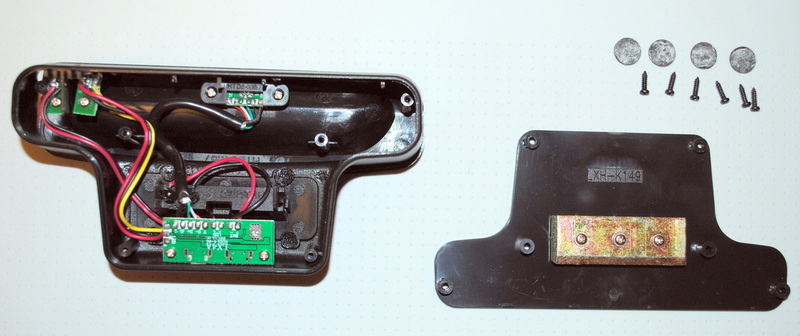
The inside of the cradle.
A piece of metal is screwed onto the cover (bottom), which acts as a weighting agent.
But we are interested in the charge battery of the additional battery.
Unscrewing two more screws, you can pull it out and examine in detail.
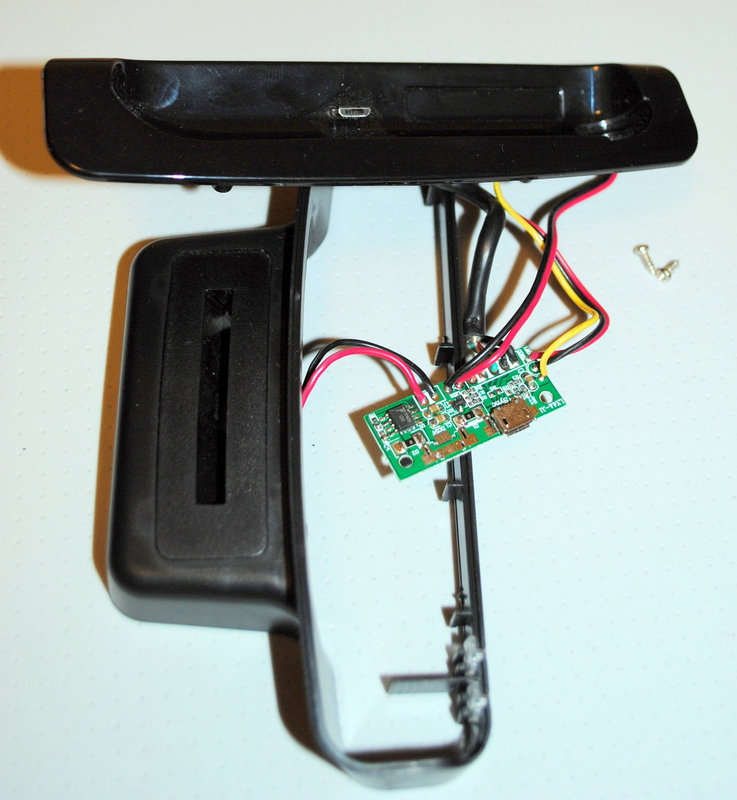

Charging board for additional battery.
The control chip “TP4056” is used for charging. It is designed to charge Li-Ion batteries and can give a charge current of up to 1000mA. A detailed description of the chip is under the link
The smartphone connection connector is wired neatly on the handkerchief, but nothing remarkable. In front of the LEDs, diffusers are inserted into the cradle housing.
And the LEDs themselves are soldered to the screwed textolite shawls.
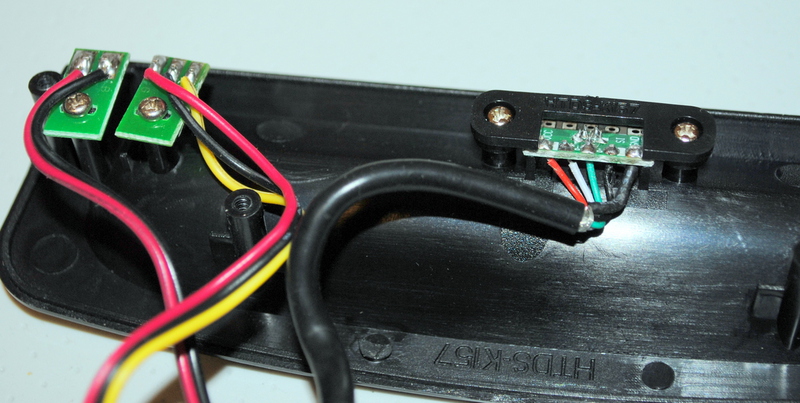
In general, the assembly is neat and credible.
Here's what is written about him on the manufacturer’s website:
Key features:
- charging for the communicator
- speaker and microphone
- volume control
- multi-function button for receiving / stopping the call
- USB input 2.5 mm
- headphone input
- Specifications:
- Weight: 220g
- Dimensions: 130 x 30 x 95 mm
Certificate:
- CE. FCC E-Mark & RoHS
Regarding the certificate, I believe in the word.
The cradle itself is included, the rod on the suction cup to which the cradle is attached and a plastic circle that can be glued somewhere in the car and fastened the rod to it.

Car cradle kit
The cradle consists, as it were, of two parts connected by a cable, i.e. these parts cannot be separated. So, if you need to stretch the cable in the car through a small hole, then this will be very difficult, if at all possible, since both parts of the cradle are quite massive.
Sucker rod works fine. The bar itself is not long and is held tight on the glass, which prevents the cradle with the phone from swaying and the image on the phone screen can be seen without problems. To adjust the tilt and rotation of the cradle on the bar there is a rotary mechanism, which is tightened by a screw ring. The cradle itself is attached to the rod with a latch that holds the cradle securely and at the same time it is quite easy to disconnect it.
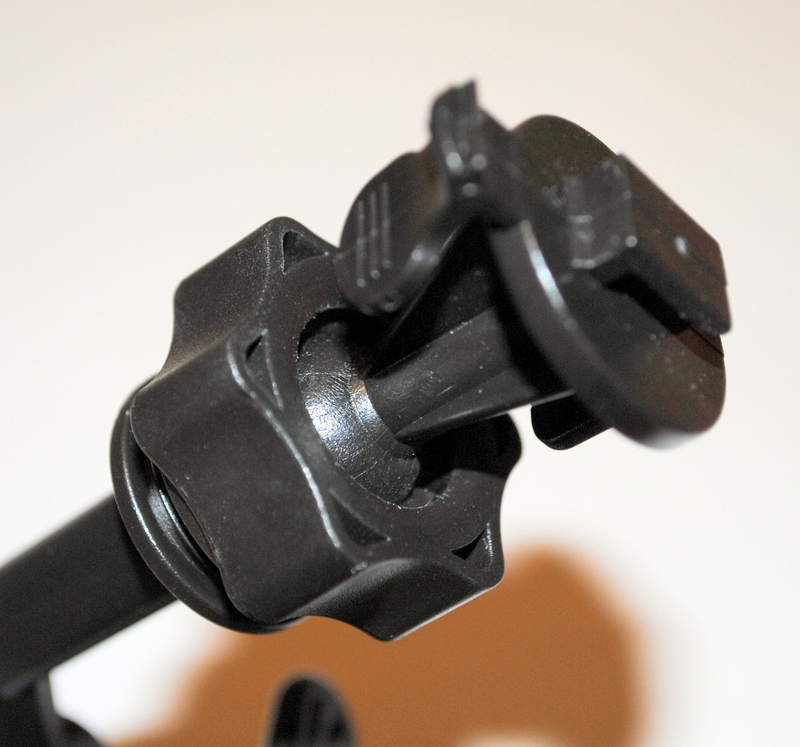
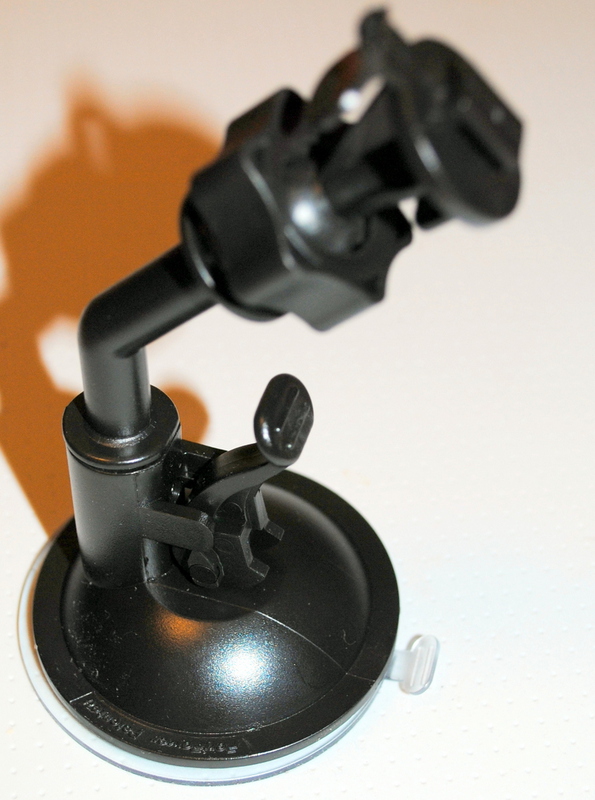
Swivel mechanism and sucker rod.
On a plastic mug on the back side is a double-sided adhesive tape of the “3M” company, which, in theory, should guarantee good adhesion to the dashboard.

Reverse side of the plastic mug with double-sided tape.
On the part of the cradle where the smartphone is inserted, there is a microphone and a power cable with a microUSB connector, and a four-pin jack for the headset. A piece of porous rubber is glued to the wall to protect the back cover of the smartphone from scratches.
It is latched on the rod reliably, it is easily removed by pressing on the protrusion of the rod latch.
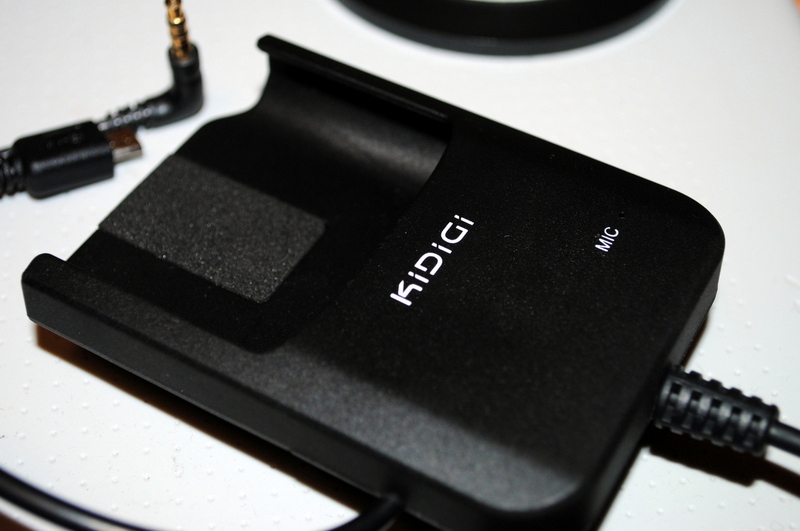
The top of the cradle.
The part of the cradle that is inserted into the cigarette lighter is pretty big. In my car, the cigarette lighter is located near the right leg, and when I insert this part of the cradle there, then I begin to catch it with my foot. We have to turn this charge a little to the side. But, as I noticed, on many modern cars the cigarette lighter is located in the middle or even in the area of the parking brake handle, so there should not be such problems.

The lower part of the cradle in the cigarette lighter car.
So, consider this detail.
There is a answer / end button.
Next up is the big speaker.
At the bottom there is an LED informing about voltage supply.
On the right is the USB-A connector, to which you can connect another device to charge, and there is also a volume control wheel.
On the left is a switch that enables / disables phone charging and headphone output.
Charges 5V and 1A.
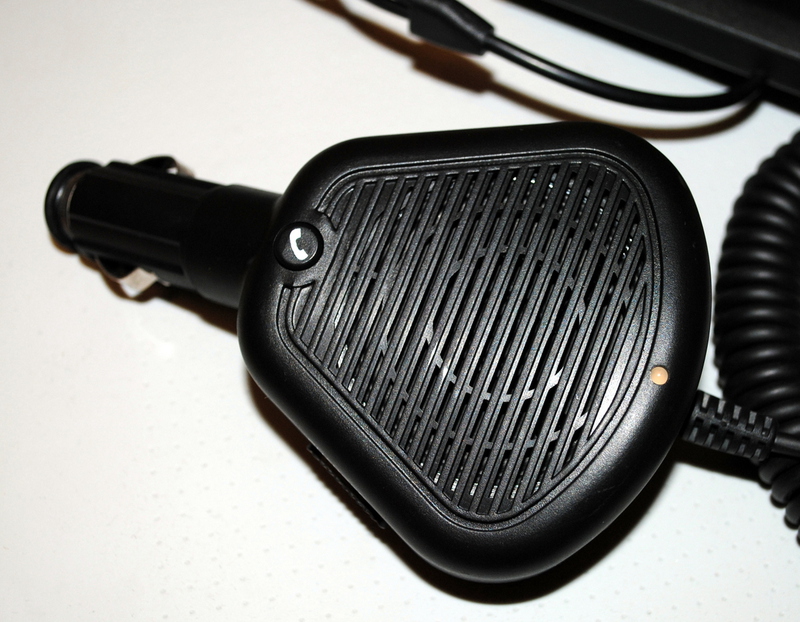

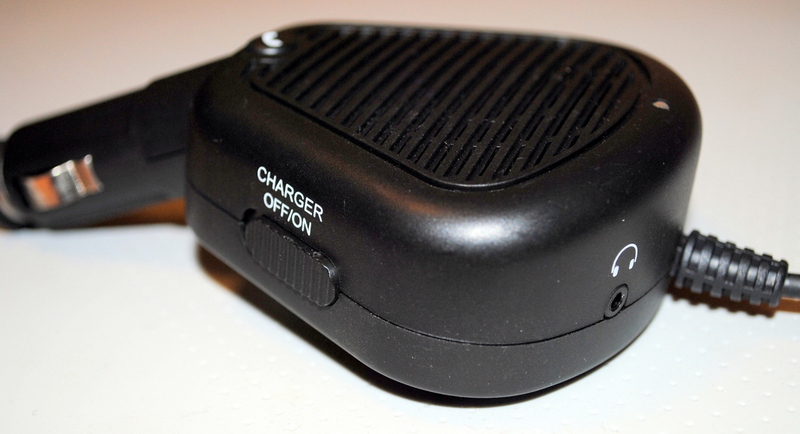

The bottom of the cradle.
There are no complaints about the quality of work. The speaker is loud and clear. The voice guidance of the GPS is perfectly audible even with loud music.
As a Hands-Free, too, everything worked "with a bang." My interlocutor heard each other perfectly.
Let's see what's inside.
First, I disassembled the upper part: I
removed the connector for the latch by unscrewing four screws.
Then, unscrewing four more screws, removed the cover and saw a microphone as well as connections for the headset and power cord. Everything is done neatly, the junction of the wiring is isolated by cambric. In general, it inspires confidence.
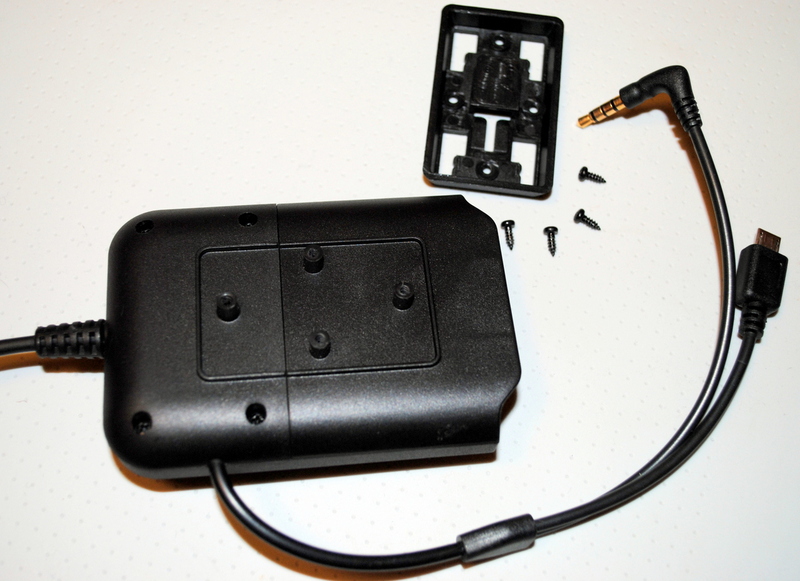
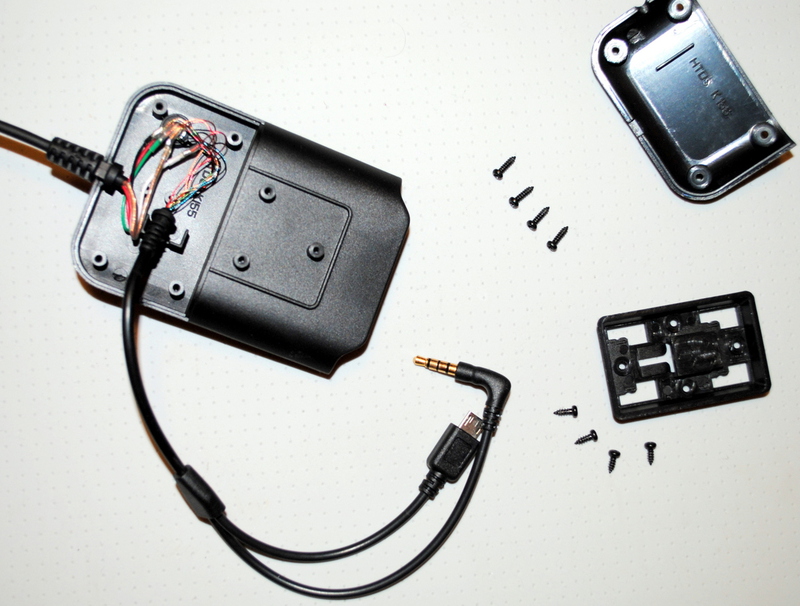

Inside and microphone of the top of the cradle.
At the bottom of the cradle there is a fairly large spring-loaded fuse.
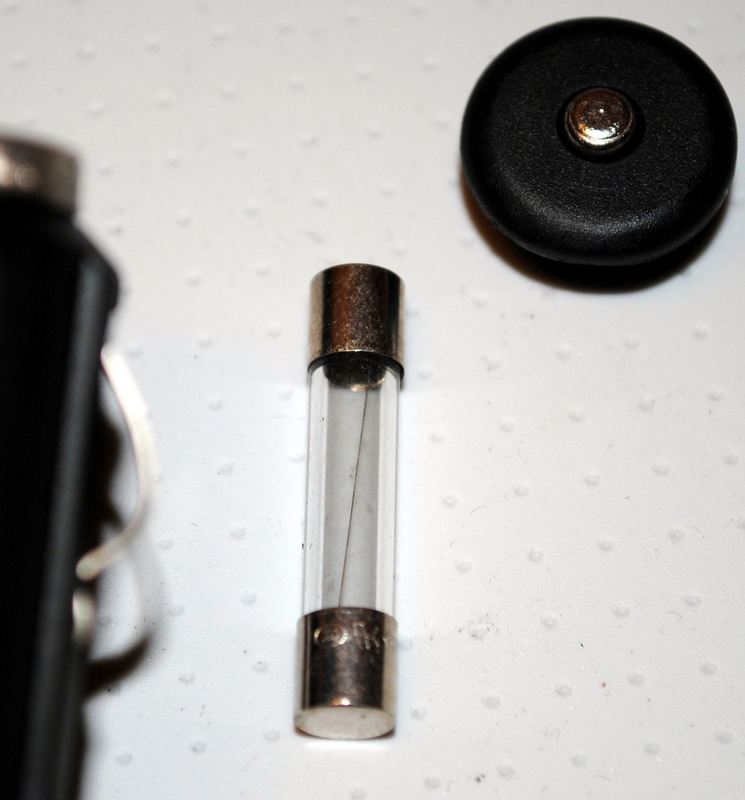
Fuse.
The lower part of the cradle is also disassembled by unscrewing four screws.
Having disconnected the two halves of the lower part, we see a large speaker and a board.
By unscrewing another screw in the center of the board, the board can be removed and viewed from the other side.

The inside of the bottom.

The reverse side of the board.
As a DC / DC converter, the LM2575S chip is used, which should bring the on-board voltage to 5V. A more detailed description of the chip on the link
Soldering elements neat.
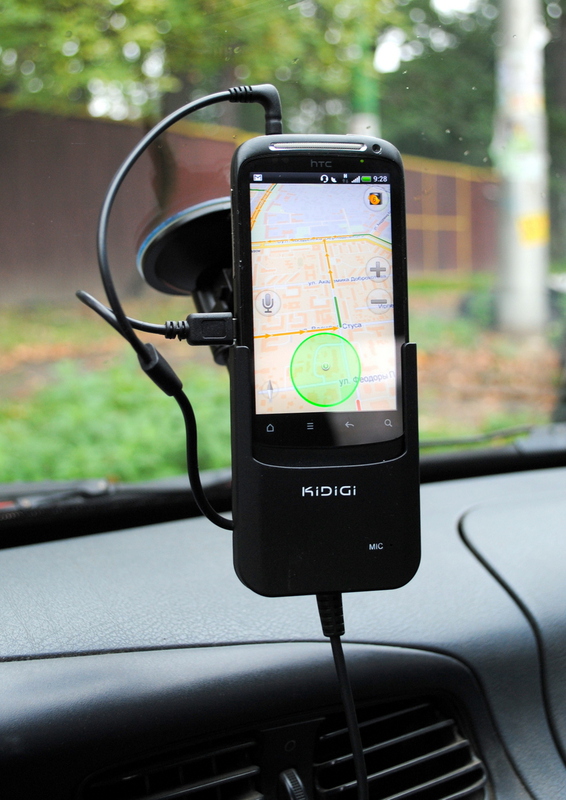
The top of the cradle.

General view of the car cradle.
Pros:
1. High-quality cradle for a smartphone;
2. There is a slot for charging an additional battery;
3. The cradle is heavier, which should not allow the cradle to slide on the table;
4. The PSU is disconnected and can be used separately;
5. There is no automatic transition to the dock mode.
Cons:
1. There is no automatic transition to the dock mode.
2. If you use a case or box for a smartphone, then you will not be comfortable using the cradle.
Pros:
1. Reliably attached to the windshield;
2. The ability to mount not only to the windshield;
3. Built-in loud hands-free;
4. USB output for charging another gadget;
5. Qualitatively made.
Cons:
1. Parts are not disconnected and there is no way to extend the cable through small holes or slots;
2. Pretty massive.
In general, I am very pleased with the cradles. Mugen Power made them efficiently and, apparently, electrically safe for your gadget. The company quite quickly produces accessories for new devices. For example, cradles for Galaxy S3 and HTC One X are already available.
In order not to be considered advertising, I will only place links to cradles upon request.
It makes sense to place this post in the hub “smartphones and communicators”, but there is not enough karma.
Add links, as requested. Cradle
website
itself desktop
cradle car
The review includes not only an external inspection of the devices listing their characteristics, but also a complete disassembly of the devices.
So, after prolonged use of the extended battery for my smartphone (a review of which I wrote earlier), making sure that the battery is quite high quality, I had a desire to acquire cradles manufactured by this company from the Middle Kingdom.
On the manufacturer’s website, I saw two models, one desktop, the other, respectively, - automobile. I was interested in both models.
Having contacted an already familiar to me, battery representative Russian-speaking company, I agreed to receive these devices.
A couple of weeks later, a parcel was waiting for me at the post office.

Packing cradles.
It was packed quite high quality.
Opening the box, I saw tightly packed cradles. Everything is neat, in its little bags, and the car cradle is in a separate box.

The contents of the box.
The desktop cradle was the first to be tested.
Here's what they write about this cradle on the site:
The angle of your Pocket PC allows you to easily see the screen and have quick and convenient access to the menu, which will allow you to use the device with maximum impact.
Features:
- Compatible with USB and USB2 ports
- Possibility of simultaneous synchronization and charging
- Current protection
- Equipped with LED indicator (LED)
- Port for charging an additional battery
- Compatible with PC and Mac (Mac)
- An ideal accessory for mobile professionals
Included:
- Cradle
- 1 AC charger
- 1 USB cable
And looking ahead, I’ll say that this is true but, first things first.

Contents of delivery.
In the kit was all of the above. The cradle is quite weighty, despite its size, however, you still have to pull out the smartphone, holding the cradle with your hand.



Cradle front, back and bottom.
Assembled neatly, nothing loopholes anywhere. Partially glossy plastic, partially matte. The materials are high quality and pleasant to the touch.
Rubber feet prevent slipping on a smooth surface.
The power supply is standard, with a USB-A connector. It has a red LED that lights when the power supply is plugged into a power outlet. It gives out 5V and 1A, as well as the HTC native charge, but the native charge is designed to charge only a smartphone, and then extra can be charged at the same time. battery, so it seems to me that it would make sense to make the PSU more powerful. Although the scenario of simultaneous charging of both a smartphone and a battery is not frequent.
The USB-micro USB cable is ordinary, in length - as short as the native HTC.
There are two LEDs on the cradle. Blue - glows when power is supplied to the cradle. The second is two-tone. Glows red when charging extra. battery. Green - if add. The battery is charged or when it is not inserted in the charging slot. Both the smartphone and the battery are inserted into the cradle perfectly and easily.


Smartphone and battery in cradle.
When installing a smartphone in a cradle, it does not automatically go into dock mode. I don’t know what this is connected with - the firmware of the smartphone or the cradle device. On the open spaces of the network, I found that this is solved by closing the MicroUSB pin 4 with a minus, but I did not conduct such experiments. In principle, for me, the lack of an automatic transition to the dock mode is even better, since a constantly burning screen is not a good idea. And if anyone needs it, it can display the dock mode icon on the desktop.
Charging took place in normal mode without any nuances. Synchronization with a computer is also.
Now you can see the inside of the device.
Let's start with BP.
It can be disassembled easily by unscrewing just one screw. No latches.
Made soundly. There is a “BL 817C 135" chip. I did not find a specification for it on the internet.


Inside BP.
Now let's get to the cradle itself.
To disassemble it, you need to unscrew 6 screws on the bottom. Two in the middle and four under the rubber feet.

The inside of the cradle.
A piece of metal is screwed onto the cover (bottom), which acts as a weighting agent.
But we are interested in the charge battery of the additional battery.
Unscrewing two more screws, you can pull it out and examine in detail.


Charging board for additional battery.
The control chip “TP4056” is used for charging. It is designed to charge Li-Ion batteries and can give a charge current of up to 1000mA. A detailed description of the chip is under the link
The smartphone connection connector is wired neatly on the handkerchief, but nothing remarkable. In front of the LEDs, diffusers are inserted into the cradle housing.
And the LEDs themselves are soldered to the screwed textolite shawls.

In general, the assembly is neat and credible.
Now let's move on to the KDG-CS1-HTDS car cradle.
Here's what is written about him on the manufacturer’s website:
Key features:
- charging for the communicator
- speaker and microphone
- volume control
- multi-function button for receiving / stopping the call
- USB input 2.5 mm
- headphone input
- Specifications:
- Weight: 220g
- Dimensions: 130 x 30 x 95 mm
Certificate:
- CE. FCC E-Mark & RoHS
Regarding the certificate, I believe in the word.
The cradle itself is included, the rod on the suction cup to which the cradle is attached and a plastic circle that can be glued somewhere in the car and fastened the rod to it.

Car cradle kit
The cradle consists, as it were, of two parts connected by a cable, i.e. these parts cannot be separated. So, if you need to stretch the cable in the car through a small hole, then this will be very difficult, if at all possible, since both parts of the cradle are quite massive.
Sucker rod works fine. The bar itself is not long and is held tight on the glass, which prevents the cradle with the phone from swaying and the image on the phone screen can be seen without problems. To adjust the tilt and rotation of the cradle on the bar there is a rotary mechanism, which is tightened by a screw ring. The cradle itself is attached to the rod with a latch that holds the cradle securely and at the same time it is quite easy to disconnect it.


Swivel mechanism and sucker rod.
On a plastic mug on the back side is a double-sided adhesive tape of the “3M” company, which, in theory, should guarantee good adhesion to the dashboard.

Reverse side of the plastic mug with double-sided tape.
On the part of the cradle where the smartphone is inserted, there is a microphone and a power cable with a microUSB connector, and a four-pin jack for the headset. A piece of porous rubber is glued to the wall to protect the back cover of the smartphone from scratches.
It is latched on the rod reliably, it is easily removed by pressing on the protrusion of the rod latch.

The top of the cradle.
The part of the cradle that is inserted into the cigarette lighter is pretty big. In my car, the cigarette lighter is located near the right leg, and when I insert this part of the cradle there, then I begin to catch it with my foot. We have to turn this charge a little to the side. But, as I noticed, on many modern cars the cigarette lighter is located in the middle or even in the area of the parking brake handle, so there should not be such problems.

The lower part of the cradle in the cigarette lighter car.
So, consider this detail.
There is a answer / end button.
Next up is the big speaker.
At the bottom there is an LED informing about voltage supply.
On the right is the USB-A connector, to which you can connect another device to charge, and there is also a volume control wheel.
On the left is a switch that enables / disables phone charging and headphone output.
Charges 5V and 1A.




The bottom of the cradle.
There are no complaints about the quality of work. The speaker is loud and clear. The voice guidance of the GPS is perfectly audible even with loud music.
As a Hands-Free, too, everything worked "with a bang." My interlocutor heard each other perfectly.
Let's see what's inside.
First, I disassembled the upper part: I
removed the connector for the latch by unscrewing four screws.
Then, unscrewing four more screws, removed the cover and saw a microphone as well as connections for the headset and power cord. Everything is done neatly, the junction of the wiring is isolated by cambric. In general, it inspires confidence.



Inside and microphone of the top of the cradle.
At the bottom of the cradle there is a fairly large spring-loaded fuse.

Fuse.
The lower part of the cradle is also disassembled by unscrewing four screws.
Having disconnected the two halves of the lower part, we see a large speaker and a board.
By unscrewing another screw in the center of the board, the board can be removed and viewed from the other side.

The inside of the bottom.

The reverse side of the board.
As a DC / DC converter, the LM2575S chip is used, which should bring the on-board voltage to 5V. A more detailed description of the chip on the link
Soldering elements neat.

The top of the cradle.

General view of the car cradle.
Conclusions.
Desktop cradle KDG-LXH-HTDS.
Pros:
1. High-quality cradle for a smartphone;
2. There is a slot for charging an additional battery;
3. The cradle is heavier, which should not allow the cradle to slide on the table;
4. The PSU is disconnected and can be used separately;
5. There is no automatic transition to the dock mode.
Cons:
1. There is no automatic transition to the dock mode.
2. If you use a case or box for a smartphone, then you will not be comfortable using the cradle.
Auto Cradle KDG-CS1-HTDS
Pros:
1. Reliably attached to the windshield;
2. The ability to mount not only to the windshield;
3. Built-in loud hands-free;
4. USB output for charging another gadget;
5. Qualitatively made.
Cons:
1. Parts are not disconnected and there is no way to extend the cable through small holes or slots;
2. Pretty massive.
In general, I am very pleased with the cradles. Mugen Power made them efficiently and, apparently, electrically safe for your gadget. The company quite quickly produces accessories for new devices. For example, cradles for Galaxy S3 and HTC One X are already available.
In order not to be considered advertising, I will only place links to cradles upon request.
It makes sense to place this post in the hub “smartphones and communicators”, but there is not enough karma.
Add links, as requested. Cradle
website
itself desktop
cradle car
